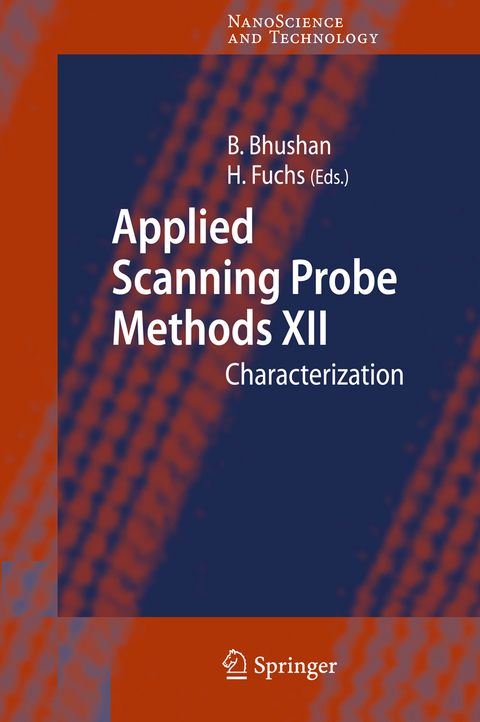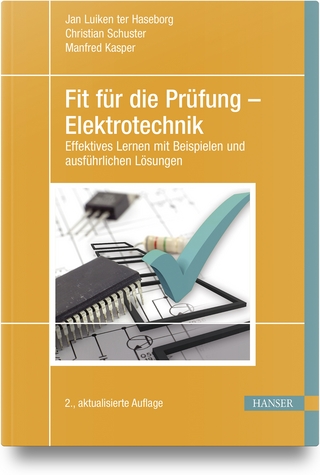
Applied Scanning Probe Methods XII
Springer Berlin (Verlag)
978-3-642-09870-3 (ISBN)
Crack initiation and growth are key issues when it comes to the mechanical reliab- ity of microelectronic devices and microelectromechanical systems (MEMS). Es- cially in organic electronics where exible substrates will play a major role these issues will become of utmost importance. It is therefore necessary to develop me- ods which in situ allow the experimental investigation of surface deformation and fracture processes in thin layers at a micro and nanometer scale. While scanning electron microscopy (SEM) might be used it is also associated with some major experimental drawbacks. First of all if polymers are investigated they usually have to be coated with a metal layer due to their commonly non-conductive nature. Additi- ally they might be damaged by the electron beam of the microscope or the vacuum might cause outgasing of solvents or evaporation of water and thus change material properties. Furthermore, for all kinds of materials a considerable amount of expe- mental effort is necessary to build a tensile testing machine that ts into the chamber. Therefore, a very promising alternative to SEM is based on the use of an atomic force microscope (AFM) to observe in situ surface deformation processes during straining of a specimen. First steps towards this goal were shown in the 1990s in [1-4] but none of these approaches truly was a microtensile test with sample thicknesses in the range of micrometers. To the authors' knowledge, this was shown for the rst time by Hild et al. in [5]. 16.
Dr. Bharat Bhushan received an M.S. in mechanical engineering from the Massachusetts Institute of Technology in 1971, an M.S. in mechanics and a Ph.D. in mechanical engineering from the University of Colorado at Boulder in 1973 and 1976, respectively, an MBA from Rensselaer Polytechnic Institute at Troy, NY in 1980, Doctor Technicae from the University of Trondheim at Trondheim, Norway in 1990, a Doctor of Technical Sciences from the Warsaw University of Technology at Warsaw, Poland in 1996, and Doctor Honoris Causa from the Metal-Polymer Research Institute of National Academy of Sciences at Gomel, Belarus in 2000. He is a registered professional engineer (mechanical) and presently an Ohio Eminent Scholar and The Howard D. Winbigler Professor in the Department of Mechanical Engineering, Graduate Research Faculty Advisor in the Department of Materials Science and Engineering, and the Director of the Nanotribology Laboratory for Information Storage & MEMS/NEMS (NLIM) at the Ohio State University, Columbus, Ohio. He is an internationally recognized expert of tribology on the macro- to nanoscales, and is one of the most prolific authors in the field. He is considered by some a pioneer of the tribology and mechanics of magnetic storage devices and a leading researcher in the fields of nanotribology and nanomechanics using scanning probe microscopy and applications to micro/nanotechnology.
Harald Fuchs, Jahrgang 1954 und Vater von drei Kindern, lebt in Pforzheim. Er arbeitete viele Jahre selbstständig in der Werbebranche, bis er sich 2004 umorientierte und unter anderem eine Ausbildung als Elektrobiologe absolvierte. 2008 begann er, sein Wissen auf eigenen Vorträgen und Seminaren an die Menschen weiterzugeben. Technologische sowie gesellschaftliche Entwicklungen und Veränderungen stehen dabei stets im Mittelpunkt seiner Betrachtungen.
Direct Force Measurements of Receptor-Ligand Interactions on Living Cells.- Imaging Chemical Groups and Molecular Recognition Sites on Live Cells Using AFM.- Applications of Scanning Near-Field Optical Microscopy in Life Science.- Adhesion and Friction Properties of Polymers at Nanoscale: Investigation by AFM.- Mechanical Characterization of Materials by Micro-Indentation and AFM Scanning.- Mechanical Properties of Metallic Nanocontacts.- Dynamic AFM in Liquids: Viscous Damping and Applications to the Study of Confined Liquids.- Microtensile Tests Using In Situ Atomic Force Microscopy.- Scanning Tunneling Microscopy of the Si(111)-7×7 Surface and Adsorbed Ge Nanostructures.
From the reviews:
"Vol. XII contains nine contributions ... of SPM applications on a variety of systems including biological systems for the measurement of receptor-ligand interaction, the imaging of chemical groups on living cells, and the imaging of chemical groups on live cells. These biological applications are complemented by nearfield optical microscopy in life science ... . Each chapter ... will make profitable reading for researchers at all experience levels. ... All the chapters are ... beautifully illustrated and in color too, also along with graphs, equations etc." (Current Engineering Practice, 2009)
"The articles ... are written in sufficient detail, so that university students, researchers and engineers can understand the physics of the instruments, the design and construction of the devices and the cantilevers, the signal processing algorithms, and their use in imaging and the surface characterization of the specimens. ... highlight various studies, techniques and applications that permit us to image, modify, fabricate and control structures at the molecular and atomic level. ... well-written and clearly illustrated." (Barry R. Masters, Optics & Photonics News, September, 2009)| Erscheint lt. Verlag | 22.11.2010 |
|---|---|
| Reihe/Serie | NanoScience and Technology |
| Zusatzinfo | LV, 224 p. |
| Verlagsort | Berlin |
| Sprache | englisch |
| Maße | 155 x 235 mm |
| Gewicht | 427 g |
| Themenwelt | Technik ► Elektrotechnik / Energietechnik |
| Technik ► Maschinenbau | |
| Schlagworte | AFM • Ceramics • liquid • Material Science • Microscopy • Nanoscience • Physical Chemistry • Polymer • REM • Surface Science • UPS |
| ISBN-10 | 3-642-09870-3 / 3642098703 |
| ISBN-13 | 978-3-642-09870-3 / 9783642098703 |
| Zustand | Neuware |
| Haben Sie eine Frage zum Produkt? |
aus dem Bereich


